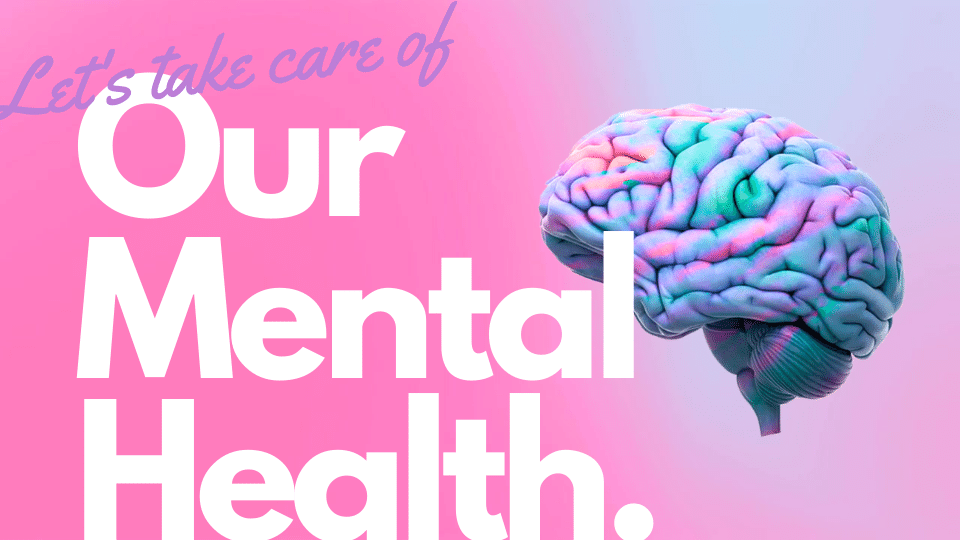Mindfulness: The Ultimate Guide to Inner Peace in 2024

Mindfulness is a mental practice focused on cultivating awareness of the present moment, often through techniques such as meditation. In today’s fast-paced world, finding inner peace can be challenging. Mindfulness offers a way to connect with the here and now, fostering acceptance and presence in daily life.
What You Will Learn from This Guide
- Understand mindfulness, its origins, and scientific backing.
- Learn effective methods for incorporating mindfulness into your routine.
- Discover how mindfulness can improve various aspects of your life.
Understanding Mindfulness: A Deep Dive into Its Essence
Mindfulness is the practice of cultivating non-judgmental awareness and being fully present in the moment. This involves observing your thoughts, emotions, and sensations without attaching any labels or judgments to them.
Key Aspects of Mindfulness
- Awareness: Developing a heightened sense of awareness of your internal and external environment.
- Present Moment: Focusing your attention on the here and now, rather than dwelling on the past or worrying about the future.
- Non-Judgmental Observation: Accepting your experiences as they are, without trying to change or judge them.
Mindfulness encourages you to embrace each moment with an open mind, fostering greater clarity and emotional balance. The practice also offers numerous benefits such as reducing stress, improving focus, and enhancing overall well-being.
“The best way to capture moments is to pay attention. This is how we cultivate mindfulness.” — Jon Kabat-Zinn
The Historical Roots of Mindfulness
Mindfulness has deep roots in Buddhist traditions and is often associated with the term sati, which means ‘awareness’. It originated over 2,500 years ago and was a key part of the teachings of Siddhartha Gautama, also known as the Buddha. He stressed the importance of sati for attaining enlightenment and overcoming suffering.
Evolution of Mindfulness Practices
Ancient Times
In early Buddhist texts like the Satipatthana Sutta, mindfulness is described as a path to spiritual development. Practitioners were encouraged to develop deep awareness of their thoughts, emotions, and bodily sensations.
Medieval Period
As Buddhism spread throughout Asia, various schools emerged, each adapting mindfulness practices to their cultural contexts. For instance, Zen Buddhism in Japan integrated mindfulness with seated meditation (zazen), focusing on breath awareness.
Modern Adaptations
In recent decades, mindfulness has transcended its religious origins. Pioneers like Jon Kabat-Zinn introduced Mindfulness-Based Stress Reduction (MBSR) in the late 20th century. This secular approach made mindfulness accessible to broader audiences, emphasizing its benefits for mental and physical well-being.
By understanding the historical roots and evolution of mindfulness practices, you gain a deeper appreciation for this ancient yet ever-evolving practice.
Also Read: 10 Effective Tips for Managing Stress: A Comprehensive Guide
The Science Behind Mindfulness: Unlocking Its Transformative Power
Scientific research has increasingly highlighted the profound impact of mindfulness on brain structure and function. One of the most remarkable findings is how mindfulness practice can lead to structural changes in the brain, specifically increased gray matter density in key areas associated with learning, memory, and emotional regulation.
Structural Changes in the Brain
Studies using MRI scans reveal that regular mindfulness practitioners exhibit increased gray matter density in regions such as:
- Hippocampus: Involved in learning and memory formation.
- Prefrontal Cortex: Responsible for decision-making, attention, and self-control.
These changes suggest that mindfulness not only enhances cognitive functions but also fortifies emotional resilience.
Impact on the Amygdala
The amygdala, known as the brain’s “fear center,” plays a crucial role in processing stress and fear responses. Chronic stress can cause the amygdala to become overactive, leading to heightened anxiety and emotional reactivity. Research indicates that consistent mindfulness practice can reduce the size of the amygdala, contributing to:
- Decreased stress levels
- Improved emotional regulation
- Enhanced overall well-being
Mindfulness helps create a buffer against stress by modulating the activity of this vital brain region. This modulation fosters a calmer, more balanced state of mind.
Key Studies Highlighting These Effects
- Harvard University Study (2011): Found that an 8-week mindfulness program resulted in measurable changes in brain regions involved in memory, sense of self, empathy, and stress.
- University of Wisconsin-Madison Study (2003): Demonstrated how long-term meditation practitioners had larger volumes of gray matter in their prefrontal cortex compared to non-meditators.
Understanding these scientific insights emphasizes the transformative power of mindfulness. By fostering structural changes within the brain and regulating key areas like the amygdala, mindfulness provides a robust framework for enhancing mental health and emotional well-being.
Mental Health Benefits of Mindfulness: A Pathway to Emotional Well-Being
Mindfulness practice offers a powerful approach to emotional well-being. Scientific studies consistently highlight the mental health benefits of mindfulness, particularly its role in anxiety reduction and depression relief.
Anxiety Reduction
Regular mindfulness practice has been shown to alleviate symptoms of anxiety disorders. By fostering a non-judgmental awareness of thoughts and feelings, individuals learn to manage their anxiety more effectively. Studies reveal that mindfulness can reduce the physiological markers of stress, leading to a calmer and more resilient mind.
Depression Relief
Mindfulness-based interventions are effective in reducing depressive symptoms. Techniques such as mindful breathing and body scan meditations help individuals detach from negative thought patterns, promoting a more balanced emotional state. Research indicates that mindfulness can decrease the recurrence of depressive episodes, offering a sustainable pathway to emotional stability.
These findings highlight how mindfulness can transform mental health for the better. By incorporating mindfulness practices into daily life, individuals can significantly enhance their emotional well-being, leading to a more peaceful and fulfilling existence.
Exploring Different Practices for Cultivating Mindfulness
Techniques for Practicing Mindful Breathing
Mindful breathing is a foundational technique in mindfulness practice. It involves focusing your attention on the breath, observing each inhale and exhale without trying to change it. This simple yet powerful technique helps reduce stress by activating the body’s relaxation response.
Steps to Practice Mindful Breathing:
- Find a Quiet Space: Sit or lie down in a comfortable position.
- Close Your Eyes: This helps minimize distractions.
- Focus on Your Breath: Pay attention to the natural rhythm of your breathing.
- Inhale Deeply: Feel your lungs expand as you breathe in through your nose.
- Exhale Slowly: Release the breath gently through your mouth.
- Notice Sensations: Observe how the air feels as it enters and leaves your body.
- Bring Back Your Focus: If your mind starts to wander, gently redirect your focus back to your breath.
Step-by-Step Guide to Performing a Body Scan Meditation
Body scan meditation is another effective method to cultivate mindfulness, promoting deep relaxation by systematically focusing on different parts of the body.
Steps to Perform a Body Scan Meditation:
- Get Comfortable: Lie down on your back with your arms at your sides and legs extended.
- Close Your Eyes and Breathe Deeply: Take a few deep breaths to center yourself.
- Focus on Your Toes: Direct your attention to the sensations in your toes, noting any tension or relaxation.
- Move Upward: Gradually shift your focus from toes to feet, ankles, calves, knees, thighs, hips, abdomen, chest, back, shoulders, arms, hands, neck, face, and head.
- Observe Without Judgment: Notice any areas of discomfort or tension without trying to change them.
- Breathe Into Each Area: Imagine sending your breath to each body part as you focus on it.
- Complete the Scan: Once you’ve scanned every part of your body, take a few moments to notice how you feel overall before slowly opening your eyes.
These practices are just starting points for cultivating mindfulness. Regular engagement with mindful breathing and body scan meditation can significantly enhance emotional well-being and reduce stress levels over time.
Applying these techniques in daily life ensures that they become integral parts of your routine for sustained benefits.
Integrating Mindfulness into Daily Life: Practical Tips for Everyday Awareness
Mindful Eating: Building a Healthier Relationship with Food
Mindful eating means fully experiencing your meals, both physically and mentally. By focusing on the sensory details of your meal—the taste, texture, smell, and appearance—you foster a deeper connection with food. Here are some principles:
- Eat Slowly: Take smaller bites and chew thoroughly. This not only aids digestion but also allows you to savor each bite.
- Eliminate Distractions: Turn off the TV and put away your phone. Create a calm environment where you can focus solely on your meal.
- Engage Your Senses: Notice the colors, smells, textures, and flavors. How does each bite feel in your mouth? What subtle flavors can you detect?
- Listen to Your Body: Pay attention to hunger and fullness cues. Eat when you’re hungry and stop when you’re satisfied.
Bringing Mindfulness into Everyday Activities
Mindfulness isn’t just about sitting quietly; it’s something you can weave into your daily routines like walking or talking with others.
Mindful Walking
Walking offers an excellent opportunity to practice mindfulness. This simple activity, when done with intention, can become a powerful mindfulness exercise:
- Focus on Your Steps: Pay attention to each step you take—the lifting of your foot, its movement through the air, and its placement back on the ground.
- Notice Surroundings: Observe the colors of nature, the sounds around you, or the feeling of the wind against your skin.
- Breathing: Sync your breath with your steps; for example, inhale for four steps and exhale for four steps.
Mindful Communication
Mindful communication involves being fully present during conversations, fostering deeper connections and understanding:
- Active Listening: Focus entirely on what the other person is saying without formulating your response while they’re still talking.
- Non-Judgmental Awareness: Approach conversations without preconceived notions or judgments. Be open to understanding different perspectives.
- Body Language Awareness: Notice non-verbal cues like facial expressions and gestures. Your own body language should also convey attentiveness.
By integrating these mindfulness practices into everyday life, you cultivate a sense of presence that enhances overall well-being.
Creating a Sustainable Mindfulness Routine: Consistency is Key
Establishing a daily mindfulness practice can be transformative for your mental well-being, but it requires consistency and dedication. Here are some steps to create a routine that works for you:
1. Start Small
Begin with just a few minutes each day. Setting a timer for 5-10 minutes helps you get accustomed to the practice without feeling overwhelmed.
2. Choose a Specific Time
Pick a time of day when you’re less likely to be interrupted. Morning or evening routines often work best as they set the tone for the day or help unwind before bed.
3. Create a Dedicated Space
Designate a quiet, clutter-free area in your home where you can practice mindfulness. This space should be comfortable and free from distractions.
4. Use Guided Meditations
There are numerous apps and online resources offering guided meditations. These can be particularly helpful if you’re new to mindfulness practice.
5. Incorporate Mindfulness Cues
Integrate mindfulness into daily activities by using cues like brushing your teeth, drinking tea, or even waiting at traffic lights to remind yourself to be present.
6. Track Your Progress
Keep a journal to note how you feel before and after each session. This can help you monitor your progress and stay motivated.
7. Be Patient
Mindfulness is a skill that develops over time. Don’t be discouraged by initial difficulties; persistence will yield benefits.
By following these steps, you create a sustainable daily mindfulness practice that gradually becomes an integral part of your life.
Overcoming Challenges on Your Mindfulness Journey: Common Obstacles and Solutions
Addressing Common Challenges
Maintaining a consistent mindfulness practice can be challenging. One of the most common obstacles is dealing with a restless mind during meditation. Thoughts may wander, and it can be frustrating to constantly redirect your focus. Another significant challenge is finding time amidst a busy schedule.
Practical Strategies to Overcome These Obstacles
To manage a restless mind:
- Acknowledge Wandering Thoughts: Accept that it’s natural for your mind to wander. The key is to gently bring your attention back to the present moment without judgment.
- Use Guided Meditations: Apps like Headspace and Calm offer guided sessions that can help keep you focused.
- Start Small: Begin with short sessions, such as 5 minutes, and gradually increase the duration as you become more comfortable.
For fitting mindfulness into a busy schedule:
- Set a Routine: Designate a specific time each day for your practice. Consistency helps in embedding mindfulness into your daily life.
- Incorporate Mindfulness into Daily Activities: Practice mindful eating, walking, or even during your commute. This way, you don’t need extra time; you’re just making better use of the time you already have.
- Prioritize Self-Care: Recognize the importance of mental well-being. Allocating time for mindfulness is an investment in your overall health.
By addressing these challenges head-on and employing practical strategies, you can stay committed to your mindfulness journey and reap its long-term benefits.
Mindfulness Beyond Borders: Applications in Education and Healthcare Settings
Mindfulness isn’t just for personal growth; it’s making a big impact in schools and healthcare too.
Mindfulness in Schools
Bringing mindfulness into schools comes with a lot of benefits:
- Better Focus: Students who practice mindfulness tend to have longer attention spans, helping them focus more on their studies.
- Managing Emotions: Techniques like mindful breathing assist students in handling stress and anxiety, leading to better emotional health.
- Improved Behavior: Regular mindfulness practice can decrease disruptive behaviors, creating a better learning environment.
Programs like MindUp and the Mindful Schools curriculum are specifically designed to teach these skills to children, promoting resilience and academic success.
Healthcare Applications
In healthcare settings, mindfulness serves as a valuable complementary approach:
- Mental Health Support: Used alongside traditional therapies, mindfulness can alleviate symptoms of anxiety and depression. Practices like Mindfulness-Based Stress Reduction (MBSR) have been shown to improve patients’ mental well-being.
- Chronic Pain Management: Mindfulness techniques help patients manage chronic pain by altering their perception of discomfort and reducing related stress.
- Heart Health: Studies show that practicing mindfulness can lower blood pressure and lead to better heart health outcomes.
Healthcare professionals are increasingly incorporating mindfulness into treatment plans, recognizing its potential to enhance patient care and overall health outcomes.
Technology and Mindfulness: Finding Balance in a Digital World
Technology is everywhere in our lives, making it hard to stay present and mindful. Constant notifications, social media, and digital distractions can make it difficult to focus on the moment. Understanding these challenges is the first step toward finding a balanced relationship with technology.
Digital Detox Strategies
Using digital detox strategies can help lessen the impact of technology on mindfulness:
- Scheduled Breaks: Set specific times during the day for checking emails and social media, reducing impulsive usage.
- Mindful Usage: Be aware of how much time you spend on devices. Use apps that track screen time and set limits if needed.
- Tech-Free Zones: Create areas in your home where technology is not allowed, such as bedrooms or dining areas, to encourage more mindful interactions.
Tips for Setting Boundaries Around Tech Use
Creating boundaries is essential for maintaining mindfulness amidst digital chaos:
- Notification Management: Customize notifications to only alert you to what’s truly important. This reduces unnecessary distractions.
- Mindful Moments: Incorporate short mindfulness exercises throughout your day. For example, take a few deep breaths before responding to an email.
- Digital Sabbaths: Dedicate one day each week as a tech-free day to reconnect with yourself and your surroundings without digital interference.
Balancing technology with mindfulness requires intentionality and practice. By setting boundaries and incorporating mindful habits, you can navigate the digital world without compromising your inner peace.
Personal Stories of Transformation through Mindfulness Practice
Real-life examples illustrate the profound impact mindfulness can have on individuals’ lives.
Sarah’s Story
Sarah, a high-stress corporate executive, found herself constantly overwhelmed. After integrating a daily mindfulness meditation routine, she reported:
- A significant reduction in her anxiety levels
- Improved focus at work
- A more balanced approach to her daily tasks
John’s Journey
John, a veteran suffering from PTSD, managed to alleviate his chronic stress and sleep disturbances through dedicated mindfulness practice, including body scan meditations and mindful breathing exercises.
His journey highlights the therapeutic benefits of mindfulness for mental health challenges.
Emma’s Experience
Emma, a university student battling depression, turned to mindfulness as a complementary therapy. Regular mindful walking and journaling helped her cultivate emotional regulation and self-compassion, leading to noticeable improvements in her overall well-being.
These cases underscore the transformative potential of mindfulness:
- Sarah: Reduced anxiety and enhanced work performance
- John: Alleviated PTSD symptoms
- Emma: Improved emotional regulation and well-being
Mindfulness practice offers a pathway to profound personal growth and healing, resonating deeply with those who commit to it.
Embracing Mindfulness as a Pathway to Inner Peace
Implement the practices you’ve learned throughout this guide to foster long-term benefits in your well-being. Whether it’s mindful breathing, body scans, or integrating mindfulness into daily tasks, consistency is key.
Take action today:
- Set aside time daily for mindfulness practice
- Explore new techniques and deepen your understanding of mindfulness
- Stay committed even when faced with challenges
Mindfulness as a tool for achieving inner peace and enhancing life quality awaits you. Begin your journey now!
FAQs
What is mindfulness and why is it important in today’s fast-paced world?
Mindfulness is the practice of non-judgmental awareness and being fully present in the moment. In today’s fast-paced world, it is crucial as it helps individuals cultivate inner peace, reduce stress, and enhance emotional well-being amidst the chaos of modern life.
What are some mental health benefits of practicing mindfulness?
Scientific studies have shown that regular mindfulness practice can lead to significant mental health benefits, including reduced symptoms of anxiety disorders and depression. By promoting emotional regulation and awareness, mindfulness serves as a pathway to improved emotional well-being.
How can I integrate mindfulness into my daily life?
Integrating mindfulness into daily life can be achieved through practices such as mindful eating, mindful communication, and engaging in everyday activities with awareness. Simple strategies like focusing on your breath while walking or being fully present during conversations can enhance your overall mindfulness.
What techniques can help me cultivate mindfulness?
Techniques for cultivating mindfulness include mindful breathing exercises and body scan meditation. Mindful breathing helps reduce stress by centering your focus on your breath, while a body scan meditation promotes deep relaxation by encouraging awareness of different parts of the body.
What challenges might I face when practicing mindfulness?
Common challenges faced during mindfulness practice include dealing with a restless mind or finding time to practice amidst a busy schedule. Strategies such as starting small, setting aside dedicated time for practice, and being patient with yourself can help overcome these obstacles.
How does technology impact our ability to be mindful?
Technology can pose challenges to our ability to remain present and mindful due to constant distractions. To find balance in a digital world, it is important to set boundaries around tech use and incorporate mindful moments throughout the day, such as taking breaks from screens to engage in deep breathing or reflection.








